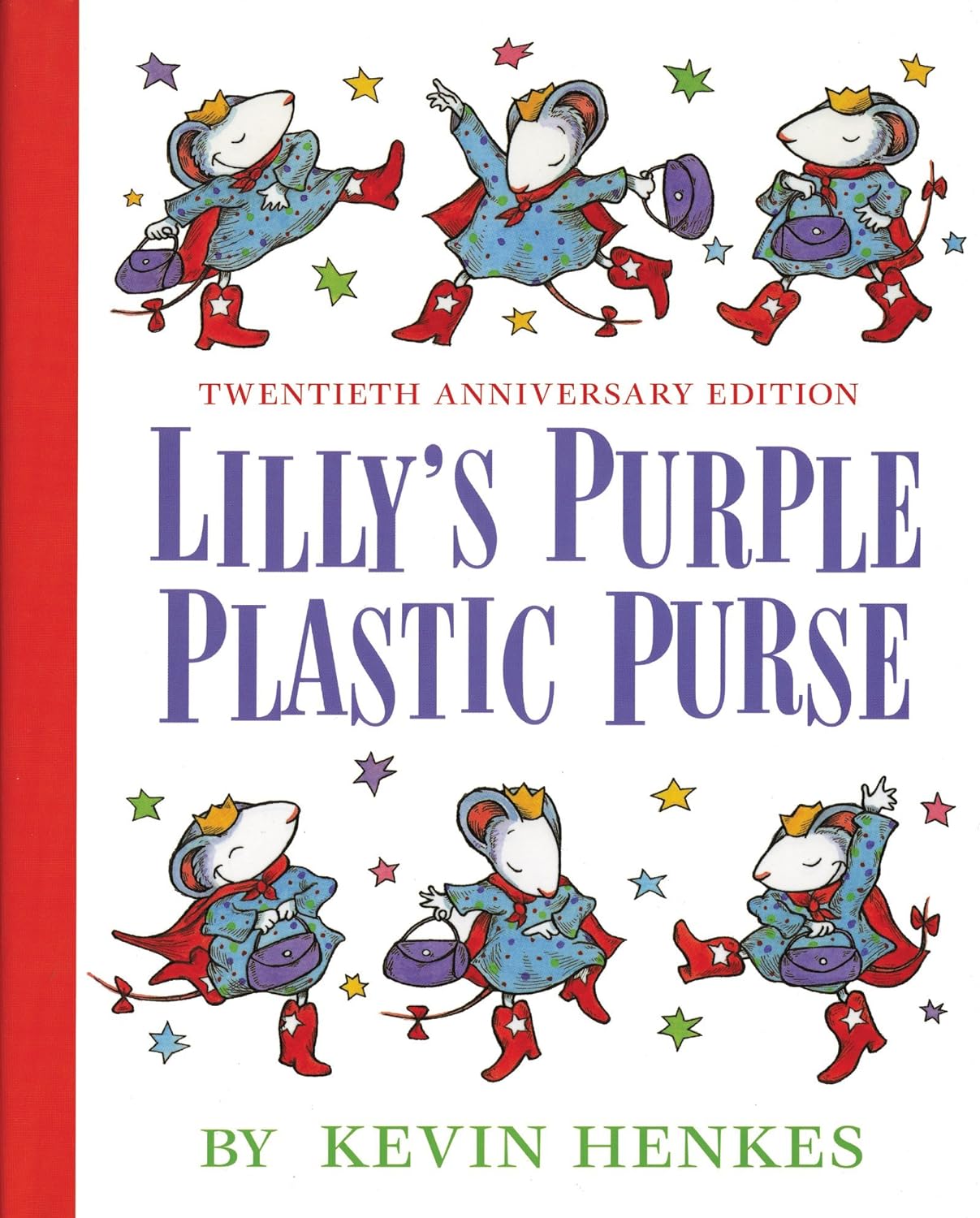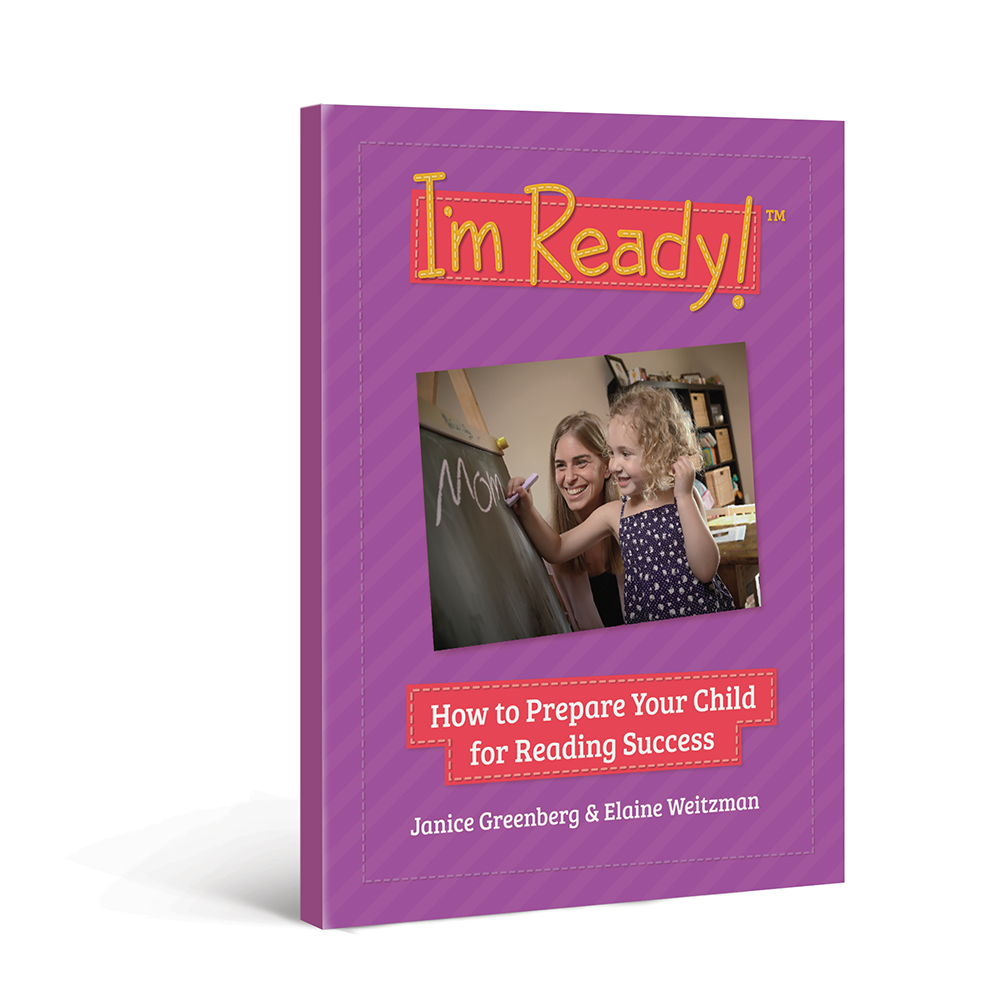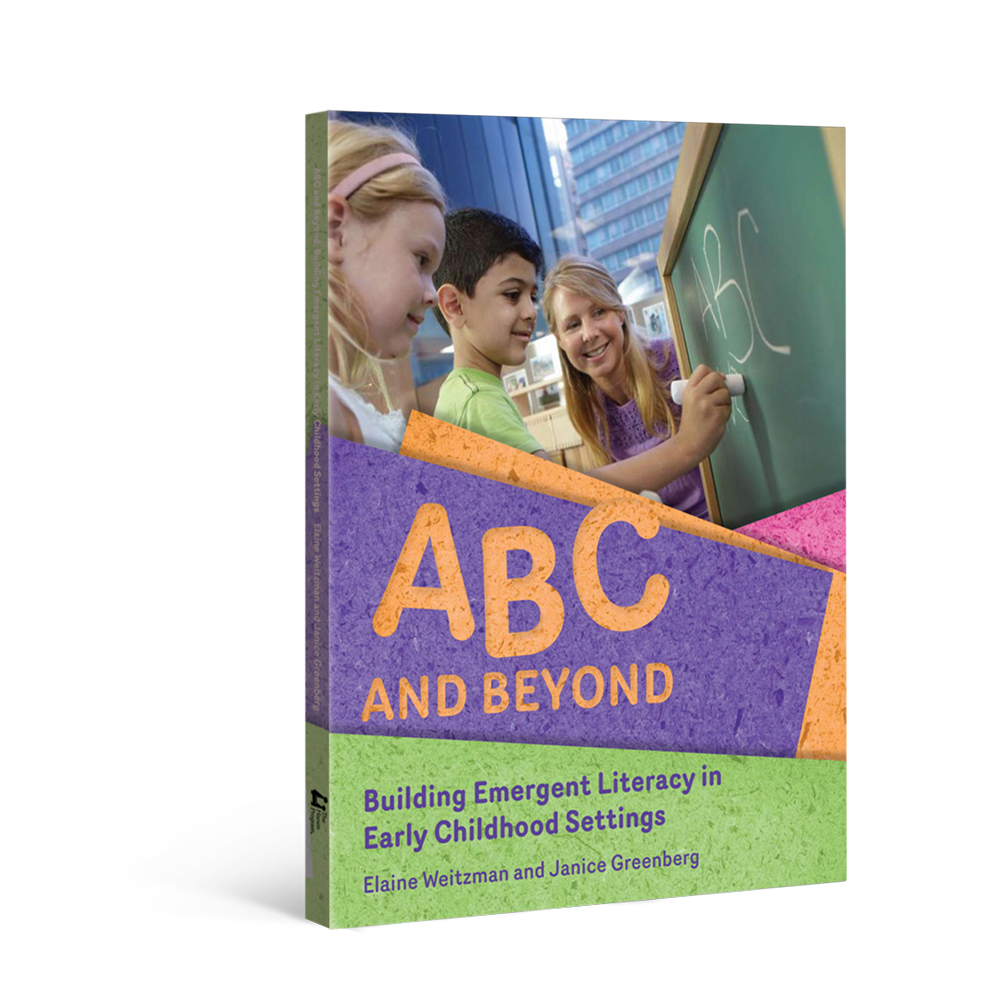This month's Book Nook topic is...
Putting it All Together with Lilly’s Purple Plastic Purse

There are many foundational skills that children need to develop in the preschool years to become successful readers and writers. These early building blocks are called emergent literacy skills and include:
- Vocabulary – How many words a child understands is one of the most important factors in learning to read. The more words a child knows, the easier it is for her to learn new words and gain meaning from the stories she reads.
- Story comprehension – Experience listening to and understanding stories will eventually make it easier for a child to read and write stories on her own.
- Print knowledge – Before a child can read and write, she must understand how print works. For example, she’ll need to know that print is made up of letters of the alphabet, that letters combine to make words and that print is read from left to right.
- Sound awareness – To be prepared to read, children must understand that words can be broken down into syllables and smaller sounds, and that letters correspond to certain sounds.
In our previous Book Nooks, we have selected books that are particularly effective for focusing on one specific literacy building block.
However, there are also books that can be used to support multiple aspects of emergent literacy. We can read these books over and over and focus on different areas of emergent literacy with each re-reading.
In this Book Nook, I will discuss how to decide what opportunities an individual book offers for focusing on the different literacy building blocks.
The Book:
Lilly’s Purple Plastic Purse by Kevin Henkes
About This Book
This book is about a mouse named Lilly who loves school, particularly because she has a wonderful teacher. Lilly brings her new purple plastic purse to school, and becomes disruptive. When she gets in trouble, it makes her question how much she really loves school.
Turning Book Reading into a Time to Talk and Have Fun
It is the conversation that occurs around a book that provides the context for supporting emergent literacy. With the exchange of ideas and information, children develop better vocabulary, comprehension, print knowledge and sound awareness. We encourage conversation when we OWL (Observe, Wait and Listen) to allow the child time to make comments or ask questions, Follow the Child’s Lead and Keep the Conversation Going.
For more information about how to build conversation during book reading, check out the post on Good Night, Gorilla.
A good choice for a book that lends itself to this back-and-forth conversation is one that:
- is about a topic that interests your child
- relates to your child’s previous or future experiences
- has clear, appealing illustrations
Lilly’s Purple Plastic Purse is such a book since the topic of going to preschool or child care and getting in trouble is an interesting one that young children can relate to. In addition, the illustrations in this book are very detailed and attractive.
Using SSTaRS to Make New Words Sparkle
The more words a child knows, the easier it will be for him to understand the stories and conversations he is exposed to. Books are an ideal source for new vocabulary. For more information on this topic, please check out the post on Giraffes Can’t Dance.
A good choice for a book which can be used to build your child’s vocabulary with the SSTaRS strategy (Stress, Show, Tell, Relate, Say It Again) should:
- include words that are unfamiliar to your child
- provide opportunities to add new words as you talk about the book
- have illustrations that show the meaning of new words
Lilly’s Purple Plastic Purse works because the book includes words like peeked, lurched and pupils, which may be unfamiliar. The descriptive illustrations do a very good job of showing what some of these words mean, and there are several opportunities to add your own words to the story. Some words that are not in the book, but that are related to the theme of the story, are forgiveness and pride.
Building Your Child’s Story Understanding with CSPAR
Your child will better understand stories, and have a greater ability to tell her own stories, if she understands CSPAR (Character, Setting, Problem, Action, Resolution) – the framework that supports most of the tales children know and love. You can read more about CSPAR in this post about Just a Mess.
A good choice for a book which provides opportunities to highlight the CSPAR framework should:
- have a clear storyline with obvious characters, setting, problem, actions that resolve the problem and resolution
- have illustrations that clearly show what is happening in the story
- relate to your child’s knowledge and experiences
Lilly’s Purple Plastic Purse is a great book for this strategy because it has a clear storyline that relates to many children’s knowledge and experiences – many children can relate to getting into trouble at school. The pictures are clear, and clearly match what is happening in the story and how the characters are feeling about the events.
Deepen Your Child’s Understanding of the Story
To fully understand what’s happening in a story, your child has to understand what’s happening between the lines of a story book. We can support this development by making comments and asking questions that encourage your child to explain what’s happening in the story, relate the book to his experiences, solve the problem in the book, and predict what will happen in the future.
A good choice for a book with opportunities to deepen your child’s understanding of the story should:
- provide opportunities for your child to think beyond what is in the written text
- provide opportunities for your child to share his opinions
- encourage your child to use his imagination
- possibly include information about a specific interest that your child has
Lilly’s Purple Plastic Purse provides many opportunities for your child to think beyond what is in the written text and share his opinions. For example, the text never explicitly states why Lilly feels awful when she finds a note tucked into her purse from her teacher. Your child might enjoy discussing what Lilly could do to apologize to her teacher.
Build Your Child’s Understanding of How Print Works
Helping your child understand how we use print will prime her for paying attention to the words on a page. The Three Billy Goats Gruff focuses on this topic in more detail.
A good choice for a book where you can use POP (Point Out Print) to help your child understand how print works should:
- have print that is large enough for your child to easily see
- have the same text repeated on several pages
- have print in different sizes or colours, or print that is written in a different direction
- possibly have speech balloons that show what the characters are saying
- possibly include a writing activity as part of the story
In Lilly’s Purple Plastic Purse the text is clear, the words “purple plastic purse” are repeated throughout the text, and there is print written in different sizes and in different directions so it stands out. There are also lines indicating that certain words are spoken by particular characters, and the characters do a lot of writing and drawing as part of the actual story.
Help Build Sound Awareness with Listen… and Find One Like It
Helping children understand that words can be broken down into sounds is called sound awareness. It is an essential skill that leads to better reading and writing later on. You can help your child focus on the sounds in words by pointing out words that rhyme or that start with the sounds. In order to use the “Listen… and Find One Like It” strategy to build your child’s sound awareness, the book should:
- include words that rhyme
- include words that start with the same sound
While Lilly’s Purple Plastic Purse doesn’t have any rhyming in it, it does include many words that start with the /p/ sound, which makes it a great book for identifying words that start with the same sound.
Increase Your Child’s Letter-Sound Knowledge
In order to read and write on their own, children need to learn that words are made up of sounds. They also have to learn that letters and sounds tend to correspond. We can build letter-sound knowledge with the Four S’s (Show, Say, Sound and Stress) in books that:
- have examples of large, clear print
- are possibly an alphabet book, with several written words that start with the same letter on one page
Lilly’s Purple Plastic Purse works for this strategy because it has clear print. Because the title contains three words that start with the letter P and make the sound /p/, you could use the Four S’s strategy with the title of the book.
Which Books to Choose
To help you figure out which strategies work best with your child’s favourite books, we’ve attached a handout that can help. You don’t need to find a book that lends itself to all the strategies at once, but it is helpful to consider which opportunities a book might offer when choosing what to read.
When you are choosing a book to read with your child, or your child hands you a book he loves, use this handout to see which features are included in the book. For example, if your child hands you a book about a particular subject, like tractors, you may find some rare words that you can make sparkle using the SSTaRS strategy. Or, if the book has a very clear, interesting story, it may be a candidate for talking about CSPAR.
What’s most important is to select books that build on your child’s interests and will result in a fun, enjoyable reading experience for you both!
When to Use Each Strategy
If you do find a book that lends itself to several strategies, you won’t want to use all of the emergent literacy strategies at once – this can be overwhelming and take away from the enjoyment of the story!
During the first reading of any book, you may keep conversation to a minimum in order to get through the book. You can focus on asking a few questions that help build your child’s overall understanding of the story, tracking print with your finger, and explaining a couple of key words in the story.
On your second reading, once your child is familiar with the story, you can ask questions and use “thinking-out-loud” comments to help your child start to read between the lines. You could also point out a print concept and introduce another new vocabulary word.
The third time you read the story – keep going! You can have conversations that take you further and further from the original story, because your child already knows the story at this point. This may also be when you point out more print concepts, or focus on sound awareness or letter-sound knowledge, if that is your focus with the book.
The more often you read the book, the more opportunities you will have to use the emergent literacy strategies.
Happy reading!
More Resources
The strategies in this Book Nook post are drawn from Hanen’s practical, research-based guidebooks for building emergent literacy. Explore the links below to learn more about how these guidebooks can support you.
For Parents I'm Ready! guidebook
I'm Ready! guidebook
For Educators ABC and Beyond guidebook
ABC and Beyond guidebook
